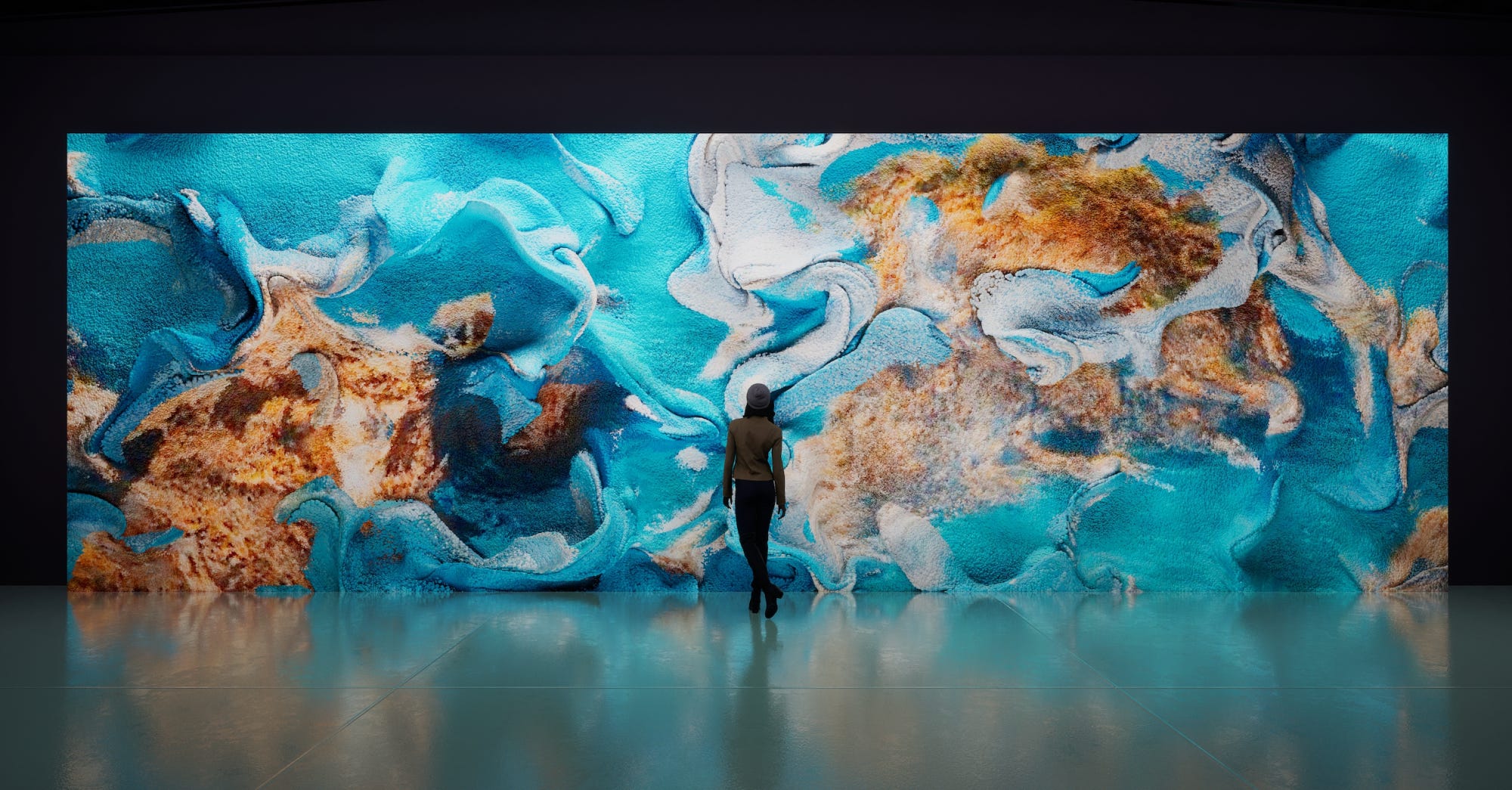Refik Anadol: Living Paintings (Capsule Review)


[Original publication: No Proscenium, 2/28/23]
Refik Anadol’s work is “a unique experience that explores the interaction between technology and art. The exhibition is a collection of installations that combine data visualization, machine learning, and architecture to create a mesmerizing display of light and sound.”
Or so says ChatGPT, according to art publication Hyperallergic.
Get Laura Hess’s stories in your inbox
Join Medium for free to get updates from this writer.
SubscribeSubscribe
That “review” is actually of Unsupervised, Anadol’s giant animated piece at the Museum of Modern Art in New York. And yet, the entire article (and subsequent prompt to assess the art from a post-colonial angle) seems — as is often the case with ChatGPT — like a legitimate, if bland, examination.
Amidst current conversations about artificial intelligence, and AI-generated art specifically, is additional work by Anadol, this time as a show at the Jeffrey Deitch gallery in Los Angeles. Living Paintings is unified by a theme of California-related datasets (wind, ocean, national parks) and is, in fact, a “mesmerizing display of light and sound.”
The exhibition consists of framed animations, relief sculptures, a mirrored infinity room, and two massive projections (the opening reception also featured an AI-generated “garden-like” scent); the largest of those projections is a process wall. According to Anadol, the process wall serves to “demystify the AI decisions, showing the algorithms.”
A misconception about his art is that AI replaces him, that he’s relegated himself (or relieved himself, depending upon perspective) to a kind of switch-flipper: He initiates a neural network chain reaction and the final output lacks creative input or artistic vision. In reality, machine learning systems and aggregated data are a type of tool, one he likens to a “thinking brush”; his is a crafted process that results in evocative, dynamic art.
In recent years, his digital practice has gained visibility beyond the fine art arena. Machine Hallucinations launched Artechouse’s NYC location, data-driven compositions were projected onto the steel meringue of Frank Gehry’s Walt Disney Concert Hall as a multi-day public event, and most recently, his pixelated cascades were a highlight of the 65th Grammy Awards’ set design.
Some critics may dismiss his work as “an extremely intelligent lava lamp,” while “the humanities, with their unprofitable baggage of historical and moral concerns, are being allowed to wither” (did Wind Map elicit the same reaction back in 2012…?). Rather than decry artificial intelligence as “artificial stupidity,” perhaps we should, especially after years of intense and sustained global hardship, escape into gorgeous fantasy; perhaps we could “think about data as a pigment” and, if only for a moment, surrender to the dreamlike hypnosis of Refik Anadol’s art.